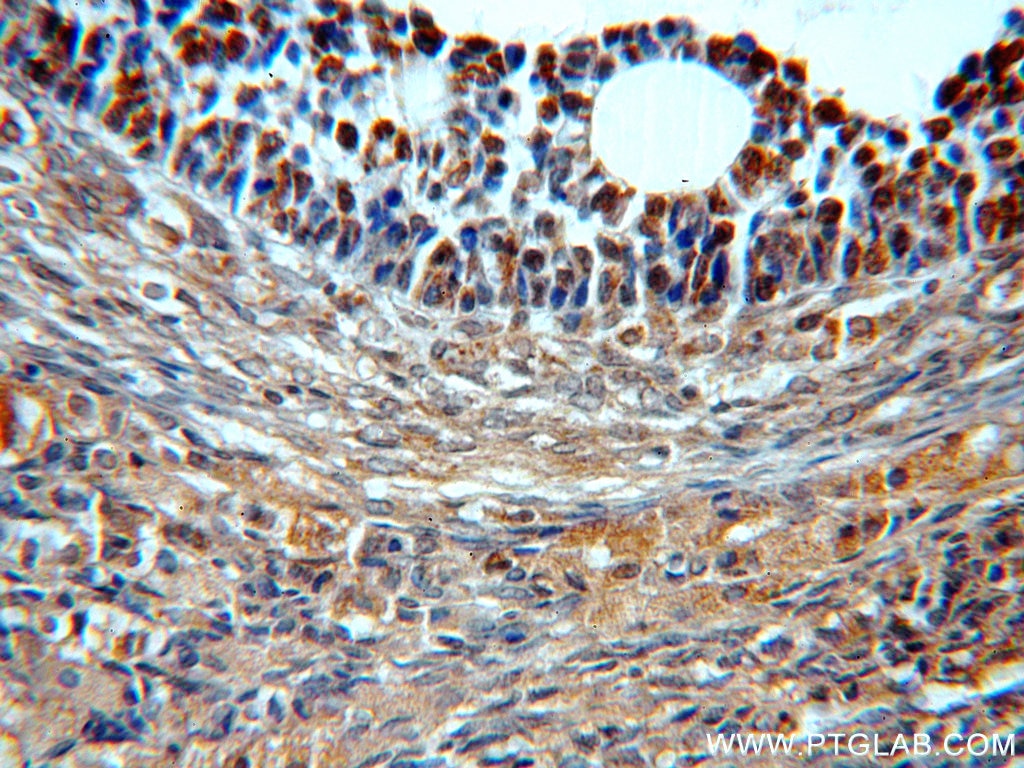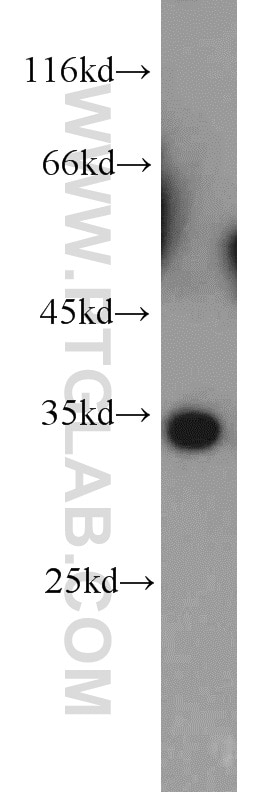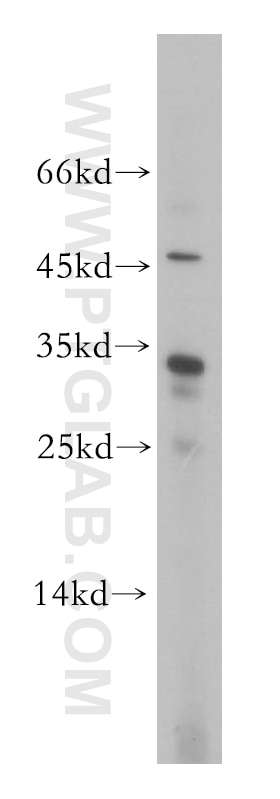BTG1 Polyklonaler Antikörper
BTG1 Polyklonal Antikörper für IHC,ELISA
Wirt / Isotyp
Kaninchen / IgG
Getestete Reaktivität
human, Maus, Ratte
Anwendung
WB, IHC, IF, ELISA
Konjugation
Unkonjugiert
Kat-Nr. : 14879-1-AP
Synonyme
Galerie der Validierungsdaten
Geprüfte Anwendungen
| Erfolgreiche Detektion in IHC | humanes Schilddrüsenkarzinomgewebe, humanes Lymphomgewebe Hinweis: Antigendemaskierung mit TE-Puffer pH 9,0 empfohlen. (*) Wahlweise kann die Antigendemaskierung auch mit Citratpuffer pH 6,0 erfolgen. |
Empfohlene Verdünnung
| Anwendung | Verdünnung |
|---|---|
| Immunhistochemie (IHC) | IHC : 1:50-1:500 |
| It is recommended that this reagent should be titrated in each testing system to obtain optimal results. | |
| Sample-dependent, check data in validation data gallery | |
Veröffentlichte Anwendungen
| WB | See 4 publications below |
| IHC | See 3 publications below |
| IF | See 1 publications below |
Produktinformation
14879-1-AP bindet in WB, IHC, IF, ELISA BTG1 und zeigt Reaktivität mit human, Maus, Ratten
| Getestete Reaktivität | human, Maus, Ratte |
| In Publikationen genannte Reaktivität | human, Maus |
| Wirt / Isotyp | Kaninchen / IgG |
| Klonalität | Polyklonal |
| Typ | Antikörper |
| Immunogen | BTG1 fusion protein Ag6651 |
| Vollständiger Name | B-cell translocation gene 1, anti-proliferative |
| Berechnetes Molekulargewicht | 19 kDa |
| GenBank-Zugangsnummer | BC064953 |
| Gene symbol | BTG1 |
| Gene ID (NCBI) | 694 |
| Konjugation | Unkonjugiert |
| Form | Liquid |
| Reinigungsmethode | Antigen-Affinitätsreinigung |
| Lagerungspuffer | PBS mit 0.02% Natriumazid und 50% Glycerin pH 7.3. |
| Lagerungsbedingungen | Bei -20°C lagern. Nach dem Versand ein Jahr lang stabil Aliquotieren ist bei -20oC Lagerung nicht notwendig. 20ul Größen enthalten 0,1% BSA. |
Hintergrundinformationen
BTG1 is a member of the TOB/BTG family of proteins known to inhibit cell proliferation and negatively regulate the cell cycle (PMID: 25017022). It is strongly expressed in quiescent cells (maximal in the G0/G1 phase) and down-regulated as the cells enter the growth cycle (PMID: 1373383). BTG1 protein is localized in cytoplasm and nucleus, and can interact with CAF1 and PRMT1 (PMID: 1113675, 9712883, 26622543). The aberration of BTG1 expression is associated with B-cell lymphocytic leukemia, and may serve as a diagnostic indicator and prognostic marker of thyroid carcinoma (PMID: 2069907, 25017022).
Protokolle
| Produktspezifische Protokolle | |
|---|---|
| IHC protocol for BTG1 antibody 14879-1-AP | Protokoll herunterladen |
| Standard-Protokolle | |
|---|---|
| Klicken Sie hier, um unsere Standardprotokolle anzuzeigen |
Publikationen
| Species | Application | Title |
|---|---|---|
Oncotarget BTG1 expression correlates with pathogenesis, aggressive behaviors and prognosis of gastric cancer: a potential target for gene therapy. | ||
Front Oncol BTG1 Overexpression Might Promote Invasion and Metastasis of Colorectal Cancer via Decreasing Adhesion and Inducing Epithelial-Mesenchymal Transition. | ||
Front Oncol Development and validation of a combined hypoxia and ferroptosis prognostic signature for breast cancer | ||
Int J Mol Sci BTG1 expression correlates with the pathogenesis and progression of ovarian carcinomas. | ||
J Cell Physiol Long noncoding RNA DGCR5 suppresses gastric cancer progression by acting as a competing endogenous RNA of PTEN and BTG1. | ||
Mol Med Rep Exosomal microRNA-301a-3p promotes the proliferation and invasion of nasopharyngeal carcinoma cells by targeting BTG1 mRNA |










